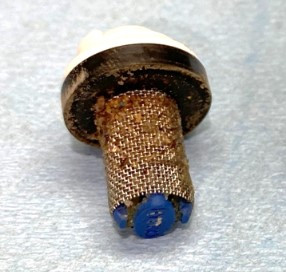By Ryan Bergman
Prior to spring field operations, ensuring your equipment is ready can save valuable time and reduce stress when windows get tight due to weather conditions. The sprayer is a critical piece of equipment in most crop production operations. Ensuring your sprayer is mechanically sound, clean, and properly setup will help ensure quality and timely applications of spring fertilizer and pesticides.
Nozzle selection and setup
The spray nozzles are a critical piece of quality spray applications. Take time to look at the products you plan to apply in 2020 and evaluate if the nozzles you already have will work well with those products at the speeds and pressure you plan to operate in. Some chemicals like dicamba and 2,4-D products have strict nozzle requirements whereas other products like glyphosate allow more choices. For example, there are only four types of TeeJet nozzles approved for use with Enlist Duo herbicide (nozzle specifications on page three). When applying multiple products, refer to the label with the most strict nozzle requirements to select your nozzle for that application. If you operate at a wide range of speeds and pressures during the season you may want to evaluate the benefits of a PWM (pulse-width modulated) spray system to provide a broader range of nozzle flow rates while managing droplet size more consistently.
Running the sprayer with water to evaluate nozzle performance before the season starts is a best practice. Ensure this is done in a safe manner with proper personal protective equipment. This allows you to check the flow through each nozzle. While this can be time consuming, it helps you identify worn, plugged, or damaged nozzles. Using a tool like a Spot-On Calibrator (video available) can make this process quicker and simpler.
Nozzles with debris build up can cause significant deviations in flow between nozzles on a common rail boom setup (Figure 1). The debris will cause the affected nozzle to experience a different pressure than non-plugged nozzles on another area of the boom and create rate variation across the boom. This illustrates the importance of recognizing the quality of water you are spraying and taking appropriate measures to protect your system from debris. This might include additional strainers on the loading lines of the machine and cleaning nozzles more frequently. It’s also good to examine nozzle alignment during this process. Nozzle holders or mounts can bend or move (especially if booms frequently hit the ground or other obstructions). Proper alignment ensures the optimum spray pattern is maintained by your machine.

Figure 1. Nozzle strainers will often build up debris as a result of dirty carrier solution or chemical build-up. If left clogged this will restrict solution flow through this nozzle and impact the application rate for this nozzle.
Solution plumbing
It’s always recommended that the machine’s plumbing is cleaned regularly to avoid chemical build up and potential cross contamination. Double check these areas prior to heading to the field in 2020.